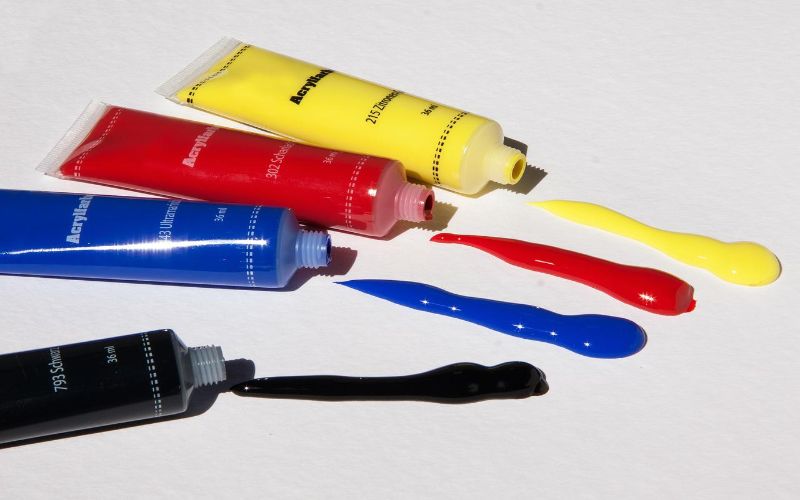Acrylic paint is a familiar formula in most painting workshops and households. It is cheaper than other options and easy to apply. Thus, you can comfortably use it regardless of your painting experience. But, Is Acrylic Paint Permanent? Does this water-based finish stick well on various surfaces? Let’s find out…
Acrylics are water-based quick drying formulas with no toxic components, making them applicable to many different surfaces.
Once acrylic paints dry, they are lightfast and permanent with a strong and flexible surface. Acrylic paints are easy to clean with simple soap and water.
To get your paint working properly following application, it is important to ensure that the formula has adhered to the surface properly to avoid chipping and peeling later.
The finish is water-resistant to a notable degree. So, you can add a top coat to protect it from harsh elements, enhancing longevity.
Sealing improves the paint’s durability. But it is advisable to follow the recommended procedures and get a suitable sealer for the job.
Fortunately, this article gives more information on acrylic paint, the best option for your project, and how to apply a sealer correctly.
What Is Acrylic Paint?
Acrylic paints came about in Germany in 1934 as water, pigment particles, and acrylic resin formulas. It was a ground-breaking discovery as the product had watercolor paints and oil qualities that could dissolve in water.
However, the brand was initially only a household product and was not preferred for commercial use until the mid-1950s.
Acrylic paint is not a complex product as it only comprises three ingredients: an acrylic binder, a pigment, and an acrylic vehicle. The binder is also known as an acrylic polymer and has two roles.
First, it holds the pigment in place after the finish dries. Then, it forms a protective film once the water separates from the paint.
An acrylic pigment gives the paint its color. It consists of small granules ground down into tiny particles and suspended in the formula without dissolving. The dye can be organic or inorganic, natural or synthetic.
An acrylic vehicle transports the binder and the pigment, and most products use water. The water blends with the binder to form a polymer emulsion. This process allows the paint to dry to a transparent polymer film after evaporation.
There is more to acrylic paints than just water evaporation to leave a pigment, as a few processes must occur before the finish dries and sets.
For instance, each portion of the paint contains a perfect pigment, water, and polymer balance. The water maintains the emulsion’s liquidity and prevents immediate hardening after paint application.
In addition, a few chemical reactions take place after application. First, the pigment suspended in the acrylic polymer particles blends and begins to dry once the finish comes into contact with air.
Next, the pigment is trapped in a hexagonal structure comprising transparent polymer molecules. Then, it dries into a stable, permanent, and water-resistant film.
How to Make Acrylic Paint Permanent
The best way to make acrylic paint permanent is by sealing it. All you have to do is get a suitable sealer for your paint type and painting material.
For example, you can choose varnish or a clear topcoat, depending on your project expectations. Also, please note that some sealers are available in aerosol form, while others are a liquid you can paint.
Sealing protects the paint finish from dust, dirt, UV rays, and water. Hence, it is a prudent alternative if the project will remain outside for an extended duration.
But remember that although varnish is a perfect option for exterior surfaces, it has more volatile organic compounds than an acrylic sealer. Therefore, use it in well-ventilated areas.
On the other hand, the best way to seal an acrylic finish to fabric is to heat it. The process helps the paint stick permanently to the material and enables it to withstand the rigors of constant wearing and washing.
Iron is the easiest way to apply heat to a cloth. However, ensure that the paint is dry to the touch before using the iron box. And as a rule of thumb, give the fabric a minimum drying time of 24 hours after paint application. This way, you are sure that the design will stay on the garment and not transfer to other surfaces.
A dryer is an excellent option for sealing fabrics. However, some garments react badly to heat. So, adjust the appliance to a low setting, depending on the material’s fabric content.
A hot iron causes scorch marks. Hence, use a pressing cloth when doubting the garment’s heat tolerance degree. In addition, dryers have a history of melting fabrics with synthetic fibers. So, be careful with your heating device.
How Long Does Acrylic Paint Last?
If you prepare the surface and seal it properly, acrylic paint can last a long time, up to 20 years or more. Some colors may lose their vibrancy under heavy sunlight exposure or after a few years, but the paint is surprisingly resistant.
If you’ve not opened the acrylic paint can, that’s a different story. An unused, unopened product has a shelf-life of about ten-plus years with proper storage.
The formula ingredients may separate with time, but they should work as the paint has not yet had air exposure.
An opened can may still be usable after four years. But again, you have to adhere to the correct storage methods. Also, acrylic paints have materials susceptible to extreme temperatures, mainly because of the polymer emersion, pigments, and water.
So, it is prudent to check the manufacturer’s product shelving instructions.
The best part of acrylic paint is also its greatest weakness, as it dries quickly. Thus, it will harden when you leave the opened can in excess temperature levels or generally expose the formula to air.
Surprisingly, even a freezing storage area shortens the paint’s shelf life. Cold temperatures cause the paint to separate or freeze and break off. In addition, it may turn into tiny icicles, making it hard to apply.
Mold and mildew also ruin the paint, and they grow when you expose the formula to dirty water or moisture. Unfortunately, you can have mold and mildew in your garage without knowing, making the product susceptible to contamination.
So, it is best to mind where you store acrylic paint. Ensure the formula is in an air-tight plastic container. Also, avoid too hot or too cold storage areas.
It is convenient to keep the product in a plastic container in your closet for small little paint amounts. But if you have substantial paint collections, consider using a garage with moderate temperature levels.
Scrutinize the paint package before storage and ensure that there are no leaks. Even a tiny leak would cause the formula to dry and become useless. So, apply a small duck tape piece to any tube leaks.
Wipe away any excess paint that can dry and crack the container. Then, wash your brushes and dry them to avoid caking, a recipe for brittle and unusable accessories. In addition, add some paint thinner for sticky paintbrushes to complete the job faster.
How Long Does Acrylic Paint Take to Dry?
Standard acrylic paints need 20 to 30 minutes to dry, while slow formulas may take more than a day, especially those on canvas. But generally, the paint takes a few minutes to dry. And since it is a water-based product, it dries much quicker than other formulas.
Even though the painted surface may appear dry to the touch, the finish is vulnerable to damage until it fully cures. Also, please note that thin acrylic paint coats need a few days to dry, whereas thick layers may take weeks.
Some slow paint needs up to 20 days to dry, especially after varnishing the surface. However, it is possible to increase the curation speed by lowering the moisture content in the atmosphere. You can consider turning on the heater.
In addition, air circulation impacts the paint’s drying time. A steady air stream speeds up the drying process, while stale air slows it down. Thus, storing the paint job in a well-ventilated space would be best.
Is Acrylic Paint Waterproof?
Although acrylic paint is slightly water-resistant, it does not provide a waterproof surface. Thus, you’d have to add a sealer over the finish to preserve it from water damage. It is also advisable to prepare the surface thoroughly before painting for better results.
On top of that, since the paint is not waterproof, rainwater will definitely ruin it. The water can wash away the finish if the paint is still wet or if you did not treat the surface. In addition, while dry paint may slightly resist water, it will eventually start to flake or peel off with constant exposure.
What Can You Use to Seal Acrylic Paint?
You can apply multiple products to seal or add a protective coat to an acrylic painting. But the sealer option depends on the surface you are painting. Check out the choices below to get a suitable one.
- Acrylic Sealer or Varnish. The best sealant for an acrylic surface is the varnish recommended by the manufacturer. The formula is available in spray and liquid form to accommodate various application preferences.
- Shellac. This product is perfect for wooden surfaces, particularly furniture.
- Gesso. The medium is not as effective but works for canvas paintings. Also, despite Gesso being better as a primer, you can use it to seal an acrylic surface.
- Lacquer. The formula produces a glossy film on wood, but it is not as durable as traditional varnish.
- Hairspray. You can use hair spray to seal acrylic paint on stone or canvas. However, it is not durable.
- Mod Podge. This product works best for fabric, paper, and other porous materials.
How to Seal Acrylic Paint
The steps needed to seal an acrylic finish vary slightly depending on the surface. However, you can follow the procedure below for a satisfactory result.
-
Prepare the Surface
Ensure that the surface is clean before applying the paint or sealer. You can use a degreaser for glass and metal surfaces and a combination of water and leather bleach for leather materials.
Some materials may require light sanding to help the paint adhere tightly, like wood and clothing. Also, it would be best to apply a primer before working on canvas or wood. This way, you are sure of a durable finish.
-
Paint the Surface
Choose the most suitable acrylic paint for your work and apply it. In addition, consider using multiple thin layers to facilitate faster drying. You will also deliver more consistent and uniform coats.
Let the paint dry before applying the resin or varnish. Otherwise, you will leave a hazy film and ruin the project’s color texture. So, please be patient and let the finish dry to the touch before coating it.
-
Clean and Prepare the Surface for Sealing
An easy way to clean the painted surface is by spreading some cornflour on the canvas. It dries the moisture from the finish. And all you need to do is let it sit for 10 to 12 hours, then wipe with a damp rag.
If the painting is on a glass surface, you can use hairspray after baking it in an oven. However, ensure that the material cools off completely before spraying. This way, you’ll deliver a long-lasting project.
-
Read the Manufacturer’s Instructions
Certain products or varnishes look like sealants, but their ingredients do not last long. Therefore, examine the elements in the product before buying it to be sure. In addition, read through the application instructions to avoid ruining your paint job after hours of work.
-
Apply the Sealer
Follow the manufacturer’s directives when applying the sealer. For instance, allow the first coat to dry before adding a second one, and only use multiple thin coats. In addition, ensure that you cover the edges for uniform coverage.
Most sealers dry quickly and may feel dry to the touch in only four hours. However, it is advisable to wait up to 48 hours before using the painted surface. Also, you may have to follow up the job with a waterproofing spray or heat set the surface to help it last longer.
Best Acrylic Paints (For Wood, Metals, Concrete, Cars)
Wood
Wood is one of the painting surfaces for acrylic paint. Moreover, it is the most sturdy and substantial material available for painting. Also, you can work on both natural and composite lumber.
You can paint acrylic products directly on wood, but there are a lot of risks involved. For example, unprimed lumber absorbs more paint, resulting in an uneven and inconsistent finish. Also, you’ll need more formula and drying time.
On top of that, remember to prime the surface beforehand to remove contaminants. This way, you enhance paint adhesion, resulting in a longer project life span.
Some of the best acrylics for wooden surfaces include:
-
Crafts 4 All Acrylic Paint Set
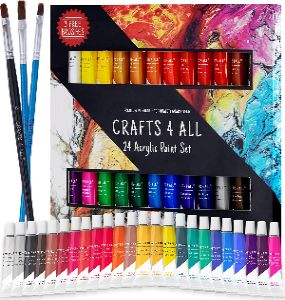 This quality, non-toxic acrylic paint is easy to clean, and you do not have to buy any toxic cleaning formulas. In addition, the paint set is EN71-3 and ASTM D-4236 certified.
This quality, non-toxic acrylic paint is easy to clean, and you do not have to buy any toxic cleaning formulas. In addition, the paint set is EN71-3 and ASTM D-4236 certified.
Crafts 4 All Acrylic Paint set is available in vivid and vibrant shades. The pigments are also eye-catching and work well on multiple surfaces, allowing you to undertake different projects.
In addition, you can use the paint on almost any painting surface, whether glass, fabric, plaster or wood. It is suitable for both seasoned professionals and beginners and outperforms various options in the market.
This unique formula has a buttery consistency that allows easy mixing and blending. You will also enjoy its maximum color clarity and brilliance, thus delivering the ultimate performance.
The paint colors have rich pigments, and the set blends perfectly to deliver an array of shades. Also, the set comes with three free paintbrushes to allow you to begin the project as soon as possible.
Check Latest Price
-
Castle Art Supplies Acrylic Paint Set
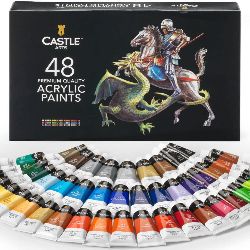 Castle Art Supplies Acrylic Paint Product works excellently on multiple mediums ranging from paper to wood, fabric to canvas. It offers the best texture and is highly versatile and suitable for advanced artists.
Castle Art Supplies Acrylic Paint Product works excellently on multiple mediums ranging from paper to wood, fabric to canvas. It offers the best texture and is highly versatile and suitable for advanced artists.
The paint has the right balance as it is neither too thin nor thick. You will enjoy a creamy consistency and have an easy time blending and applying the product. Even better, the set has various colors to deliver remarkable hues.
The acrylic paint set adheres to the ASTM D-4236 standard. It is water-based and not toxic, making it user-friendly and perfect for household applications. In addition, the formula comes in aluminum tubes, assuring maximum freshness.
Check Latest Price
Metals
Metal is another surface you can use for acrylic paints. However, it is prudent to prepare the surface thoroughly before painting and apply a recommended paint for the project. Check out a few alternatives below.
-
RUST-OLEUM Professional High-Performance Enamel Spray
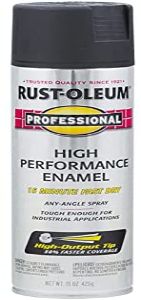 Rust-Oleum paint gives the surface superior protection from wear and tear and other environmental elements. It is also user-friendly and attractive and delivers a smooth finish. Therefore, you can be sure of a successful project.
Rust-Oleum paint gives the surface superior protection from wear and tear and other environmental elements. It is also user-friendly and attractive and delivers a smooth finish. Therefore, you can be sure of a successful project.
The spray has a high resistance level to rust, fading, and abrasion. In addition, the bottle comes with a spray tip, flexible enough to work from any angle. So, you can use it with so much ease.
This enamel spray works for interior and exterior projects and ferrous and non-ferrous metals. It dries very fast and dries to the touch in 15 minutes. Also, the paint delivers an excellent and glossy reflective finish, delivering an expert finish.
Check Latest Price
-
RUST-OLEUM Universal Hammered Spray Paint
Rust-Oleum Universal Hammered Spray Paint is a two-in-one combination of primer and paint. You can also use it for multiple surfaces, such as vinyl, wood, and plastic, and expect a desirable outcome.
The formula is oil-based and features solid adhesive properties. It dries and cures very fast, and you can touch it in only 30 minutes. However, it is advisable to shake the paint bottle before using it for a better outcome.
Check Latest Price
Concrete
There are two types of paint for concrete surfaces; acrylic latex paint and epoxy paint. Acrylic paint is a water-based formula that blends and spreads quickly on various multiple masonry surfaces. You can use it on walls, steps, floors, or other block or concrete areas.
In addition, the paint does not need any special brushes, tools, or rollers as it is a very user-friendly DIY product. Acrylics are more budget-friendly than epoxies and more suitable for beginners.
On the other hand, epoxy paint is an excellent option for concrete surfaces. It is incredibly long-lasting and can withstand harsh treatment, which is ideal for garage floors.
Also, epoxies create shiny and glossy finishes with decorative color flakes. Thus, you can consider them for a high-end garage or vehicle showroom.
Below are some acrylic options for your work.
-
INSL-X SU031009A-01 Sure Step Acrylic Anti-Slip Paint
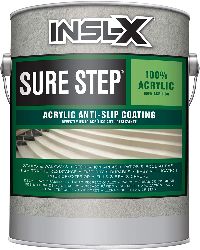 INSL-X SU031009A-01 works on concrete, metal, and wood surfaces and delivers a skid-resistant and durable finish. It is perfect for exterior and interior projects, and you can brush or roll it on the surface.
INSL-X SU031009A-01 works on concrete, metal, and wood surfaces and delivers a skid-resistant and durable finish. It is perfect for exterior and interior projects, and you can brush or roll it on the surface.
The paint is water-based, making cleanup easy and straightforward with warm water and soap. Also, light foot traffic is okay after 24 hours of drying. However, it would be best to avoid heavy traffic surfaces such as sidewalks and walkways for about four to five days.
Check Latest Price
-
KILZ Self-Priming Masonry, Stucco, and Brick Paint
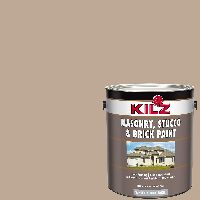 KILZ masonry paint is perfect for painting floors and basement walls. It is a water-based paint that provides a mold-and-mildew-resistant coat. Therefore, you will have fewer effects from a damp basement.
KILZ masonry paint is perfect for painting floors and basement walls. It is a water-based paint that provides a mold-and-mildew-resistant coat. Therefore, you will have fewer effects from a damp basement.
The paint works on drywall, stucco, concrete, drywall, and brick surfaces, and you can apply it with a toller, sprayer, or brush. In addition, cleanup is pretty easy to use and affordable as warm water and soap take care of the job.
Check Latest Price
Cars
It may sound strange to use a water-based paint for vehicles that drive in the rain. But acrylic formulas are realistic, affordable, and easy to use. Also, all you need to do to give it longevity is use a topcoat.
Some of the acrylic paints to use for your car include:
-
SPEEDOKOTE High Gloss 2K Acrylic Urethane
 Speedokote High Gloss Acrylic Urethane is a two-part system that utilizes acrylic urethane pigments and delivers a rich color. In addition, it has a second compound that serves as an activator.
Speedokote High Gloss Acrylic Urethane is a two-part system that utilizes acrylic urethane pigments and delivers a rich color. In addition, it has a second compound that serves as an activator.
The paint comprises a gallon of ¾ urethane resin and a ¼ of a gallon of an activator, leaving you with a whole paint gallon to work with. The ratio also gives you the option of a five percent reduction when using a urethane grade reducer.
Check Latest Price
-
Dupli-Color Car Paint Lacquer
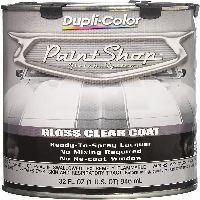 Dupli-Color EBUN01007 has an array of shades to help you get the ‘perfect match for your project. Most users review the product as a time and effort saver, thanks to its user-friendliness.
Dupli-Color EBUN01007 has an array of shades to help you get the ‘perfect match for your project. Most users review the product as a time and effort saver, thanks to its user-friendliness.
Choosing paint for projects can sometimes be a personal experience because it hinges on the specific techniques you want to employ and the preferred art style. Also, as you gain painting experience, you’ll discover the varieties and brands you like best.
Nonetheless, there are primary factors to consider when selecting acrylic paint for any project. They apply to both seasoned experts and beginners. Let’s have a look at them.
Check Latest Price
Drying Time
Most artists prefer acrylic paints because they dry very quickly. However, it can be a hassle if the formula dries out on the palette or brush before you finish painting.
Also, it would be easier to use a product that stays wet for a longer duration when you want to mix paint on canvas surfaces and create blending effects.
Fortunately, we have some tips to extend your acrylic’s drying time. Painters who want the slow drying time of oil paints but still like the permanence and versatility of acrylic products can buy open/interactive acrylics or use a retarding medium.
An open/interactive acrylic paint is a relatively new form of the product manufactured to include a retardant that slows the drying time down to a few weeks. They are convenient for artists looking to replicate oil formulas with acrylic.
Quality
Acrylics are available in two grades: Student’s quality and artist’s quality. Student quality paints are cheaper, but they have a smaller selection, lower pigment levels, and more fillers that weaken the paint’s color strength.
On the other hand, artists’ quality paints are available in multiple colors, boast high-performance ratings, and have a high concentration of finely ground pigment.
In addition, they are more vibrant and have a smoother consistency, making them easier to mix and layer than students’ quality products.
It is okay to start off with students’ quality paint if you are an amateur and on a budget. But consider transitioning to the artist’s colors once you begin producing and selling your paintings.
Pile of Pigment
As you look through artists’ paints, you’ll notice that some colors are more pricey than others. Some pigments are hard to obtain, while some manufacturers group their paints according to series, with one being the cheapest and seven the most expensive.
Typically the earth shades are the cheapest, while colors from cadmium can go for up to four times as much! Some brands offer affordable alternatives by substituting with synthetic pigments.
But you can be sure that the paints will feature less color intensity and a lower performance rating.
Nowadays, it is possible to purchase ‘specialty colors’ like iridescent or fluorescent paints. The products have pigments that will deliver impressive luminous effects, whether on their own or blended with regular paint,
Permanence
This attribute refers to the ability of a pigment in paint to resist gradual fading even with light exposure. Most acrylic hues have more excellent permanence or lightfastness ratings than watercolors and oils.
ASTM (formerly the American Society for Testing and Materials) classified artists’ pigments based on a test simulating twenty years of gallery exposure.
You can find the ASTM rating on the product package. It is advisable to use paints with excellent lightfastness ratings to get the best outcome.
Viscosity
Viscosity is the thickness or consistency of acrylic paint. Heavy body formulas have a thick, buttery texture, similar to oil paints. They also facilitate color blending and retain brushstrokes.
Conversely, fluid acrylics are thinner and more suitable for staining, dry-brush work, detail work, and watercolor techniques. Also, there are many acrylic mediums to use when looking for something in between fluid and heavy body acrylic paints.
Generally, whichever paint type you get depends on your preference and painting style. But please consider using more common heavy body acrylics if you are just starting out. The products are easy to thin out with water or a medium when necessary.
Tube or Jar
Heavy body acrylic formulas come in either tubes or jars. Tubes are smaller and portable, but you can save money with jars by getting more paint at once. In addition, paint from tubes is paste-like, whereas paint from a jar is still thick but flattens out when on the surface.
You can start off with the tubes when unsure of what to get. Then, buy a few jars once you clarify the particular colors and brands you prefer. Also, consider the smaller two fl. oz. tubes because you want to keep your options open and experiment with other brands.
Brands
Although some brands are better than others, it is really a matter of personal preference when working with top-tier manufacturers.
However, make sure that you get paint of the same quality when using different brands on the same painting. Combining paints with different chemical formulas causes poor adhesion, curdling, and other irregularities.
How Do You Make Acrylic Paint Last Outside?
Waterproofing your creations is a perfect way to make acrylic paint last outside. In addition, sealing a painting is a simple task that does not take long and offers rewarding results.
Without a waterproof finish, water begins to seep into acrylic paint since it is porous. Hence, the finish will peel, chip, peel, and crack. Tinny bubbles will also appear as the pigment in the formula separates from the emulsion.
Frequently Asked Questions
Here are some of the most commonly asked questions on the subject:
-
Can You Wash Off Acrylic Paint?
It is possible to wash off acrylic paint from a surface. But the steps depend on whether the paint is dry or wet and the type of surface. Wet acrylic paint is easy to wash off from most surfaces while removing a dry finish is more complicated.
Try running clothes through the washing machine when you want to remove an acrylic finish from them. Next, soak the fabric in nail polish or rubbing alcohol for 15 minutes and use an old toothbrush or a scrub brush to scrape off the finish.
You can wash acrylic paint off of your hands with water and soap. But for dry paint, you need some baby oil or rubbing alcohol to completely remove it.
-
What Is the Best Temperature to Store Acrylic Paint
Acrylic paints are water-based, meaning they can freeze in freezing temperatures. Most acrylic products manufacturers recommend 60 to 77F or 15 to 24 Celsius for both storage and application. Also, anything below 45F or 7.2 Celsius is a bad idea.
It is best to avoid environments that are not temperature controlled, like basements and garages, when living in areas with extreme temperatures. Look for cool and temperate storage spaces for a lengthened product shelf life.
-
How Do I Restore Dried or Hard Acrylic Paint
The best way to re-hydrate or restore acrylic paint is using mixers and wetting agents. These products restore the formula to the desired consistency, making it suitable for future applications.
-
Can I Use Acrylic Paint on Glass?
It is okay to use acrylic paint on a glass material as it is a versatile medium. But there is a caveat. The surface needs special preparation and paint that will stick to the smooth surface without peeling.
In addition, it is advisable to seal the finish to ensure that it does not wash off later.
Remember that acrylic paints are not compatible with glass without using the correct medium, paint, and proper priming. Therefore, they will slip down or stick loosely to the material, making them difficult and impossible to clean.
Also, glass is a non-porous surface, meaning that the paint will not soak into the surface but only sit on top. So, it is essential to seal the material to keep the acrylic finish from peeling off.
Finally, although acrylic paint is a decorative medium, it is not 100 percent skin or food safe. Please be careful with painting kitchenware and glass surfaces directly touching food.
Conclusion
Acrylics are water-based, quick-drying, non-toxic formulas that work on multiple materials. In addition, they are lightfast and durable when dry, making the surface solid and flexible.
However, artists wonder how long they can expect their creations to last, thus prompting the discussion:
Is Acrylic Paint Permanent?
Acrylic paint is permanent when dry and even shares many attributes with plastic, such as water resistance. Also, the paint pigments give it a rich color while the acrylic polymer binds the pigments after curing.
You can also consider taking some time after painting to seal the product. This way, you deliver a waterproof project that will last a long time.
